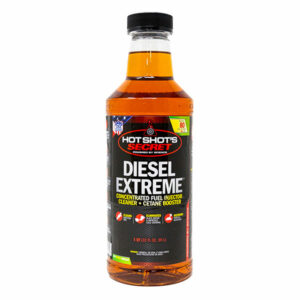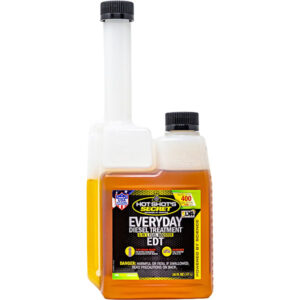Guide to Engine Codes
Seeing a check engine light on your vehicle’s dashboard often results in a state of worry. What could be wrong? Thanks to a mandate enacted in 1996, your vehicle likely has an onboard diagnostics (OBD) system that can tell you everything you need to know about your vehicle using convenient engine codes.
The codes for check engine lights provide you with essential information that will enable you to create a plan of action. Whether you need to repair or replace specific components, you can rely on these codes to point you in the right direction.
In this guide, we cover what engine codes are, how you can read them and where you can access them to ensure your vehicle runs smoothly again.
What Is an OBD-II Code?
An OBD system informs you about the condition of your car or truck and notifies you when any issues occur. This information access was introduced around the early 1980s, starting with OBD-I codes. Modern OBD-II codes improve early diagnostics and provide real-time data about the engine’s operating conditions.
This information is collected and stored within the electronic control unit (ECU), which operates as the brain of your car’s system. The ECU communicates with a network of sensors to conduct self-checks and ensure your vehicle is in the best condition.
What Are Diagnostic Trouble Codes (DTC)?
The codes produced from the OBD are known as fault codes or diagnostic trouble codes. OBD codes identify a problem within the broader system, such as the chassis, body, powertrain or network, whereas a DTC code addresses an issue in a specific area. These codes use a specific assortment of numbers and letters to indicate where a fault has occurred and what the problem is.
When your car’s computer sensors find a problem with any system, including electronics or the motor, it will flash the check engine light to let you know. You can check for codes to streamline the repair process by using a scan tool that plugs into your OBD-II port, which you can usually find beneath the steering column. The details your sensors collect are stored within your ECU until you clear it or more serious codes override them.
How to Extract Engine Codes
You’ll first be alerted to a problem within your car or truck when your check engine light appears. If the light stays on consistently, the problem likely has to do with your emissions system or another safety component. But, if it flashes, you could be looking at a more severe issue with a critical system, like the engine.
If you want a more detailed report of your vehicle’s condition, you’ll need to evaluate the DTC codes. You can view your engine codes through the odometer, but the easiest way to view them is with a scan tool or reader. Readers allow you to examine and clear codes and even reset your check engine light, while scanners can offer additional information to troubleshoot. Depending on your vehicle, you might also be able to download an app and connect to your car’s Bluetooth connection to view the codes.
Overall, extracting your DTC codes using a scan tool is fairly straightforward. Turn the ignition on without running the engine and then plug your scanner into your vehicle’s OBD port. Your tool should automatically turn on and will either cycle through the codes or allow you to scroll through them at your own pace.
How to Read OBD Codes
While some cars may have specific OEM codes for unique systems, most OBD-II codes have become standardized throughout common vehicle makes and models. To evaluate your check engine codes yourself, you’ll need to understand what each digit means. While you can look the codes up online or in a manual, it’s helpful to have a general idea of what the letters and numbers mean.
Various codes can cause a check engine light in your car, truck or SUV. They consist of five characters, each communicating an integral piece of information you can use to fix the issue. The codes fall under four categories, indicated by the first character. These letters include:
- P: Signifies a problem within the powertrain system, including components like the battery, transmission and motor.
- C: Identifies issues in mechanical systems within the chassis, such as steering and braking.
- B: Specifies trouble with functions inside the vehicle’s body responsible for comfort, driver assistance and safety.
- U: Indicates faults relating to the computer and electronic systems.
The second character will either be a zero or a one. If it is a zero, you’ll know that the code is standardized across all vehicles, while a one means the code is specific to the manufacturer. Manufacturer-specific codes are typically less common.
The third character is a digit representing the affected system, helping you pinpoint where to look. It will be one of the following numbers:
- 1: Fuel and air metering system
- 2: Fuel system
- 3: Ignition system
- 4: Emissions system
- 5: Idle speed control
- 6: Input and output signals from the ECU
- 7: Transmission system
- 8: Transmission system
The last two numbers in the sequence are designed to be read together and illustrate the exact issue. They will fall within the range of 0 to 99, as stated by the fault index. You can diagnose the problem by using a manual or searching for the code online.
While an assortment of problems could occur, you can generally expect to find at least one P0xxx — powertrain and standardized — code when the check engine light is on.
Types of DTC Codes
Most of the codes you will encounter will be generic, meaning they’re the same across all makes and models of vehicles. However, you may also see manufacturer-specific codes, which will require you to check with your manufacturer’s manual to address the issue.
While a check engine light will accompany most codes, some OBD codes do not initiate a light because the issue only happens occasionally. These are known as pending codes because they are stored and in the process of being confirmed by the ECU. These codes will only switch on the indicator light when they mature.
Finally, your engine codes can be either critical or noncritical, depending on the degree of severity. Critical codes will be present when your vehicle has an issue that can cause significant damage, such as imminent engine failure. Noncritical issues should still be addressed, but there’s no immediate danger.
Common DTC Codes
In all, more than 5000 OBD-II trouble codes can cause your engine light to come on. These codes range in severity and frequency, with some being more regular than others. Many of these standard codes relate to the exhaust gas recirculation (EGR) system.
The EGR system regulates the flow of exhaust gases into the engine’s intake system. Ultimately, it works to reduce nitrogen oxide emissions and increase overall vehicle efficiency. However, these systems can fail and require repairs and replacements. If your system is experiencing problems, you might receive the following codes:
- P0401: This code signifies a reduced flow of recirculated exhaust gases into the intake manifold resulting from a faulty EGR valve.
- P0402: The EGR Flow Excessive Detected code means there is too much recirculated exhaust gas flowing through the system.
- P0403: When you see this code, your vehicle has a short or open circuit in the vacuum control solenoid or wiring.
- P0404: This DTC has to do with the vehicle’s EGR Control Circuit Range/Performance and tells you that your system’s valve or sensor isn’t working at the specified measurements.
- P0405: An EGR Sensor A Circuit Low engine code reveals your sensor is reading a low voltage level in your EGR sensor.
- P0406: This type of DTC code signals your EGR sensor is registering a voltage that is higher than normal.
Choose Hot Shot’s Secret Products
At Hot Shot’s Secret, we’re dedicated to helping our customers maintain healthy and efficient engines. Our industrial-grade products will help resolve check engine lights and keep your vehicles on the road longer, no matter what you’re driving. We cover the needs of various makes and models, including gasoline and diesel-powered engines, to ensure you have the cost-effective solution you deserve.
If you want to keep your check engine codes to a minimum, our products can help. Check out our catalog and purchase what you need. If you have questions about what our offerings can do for your vehicle, contact us online today!



